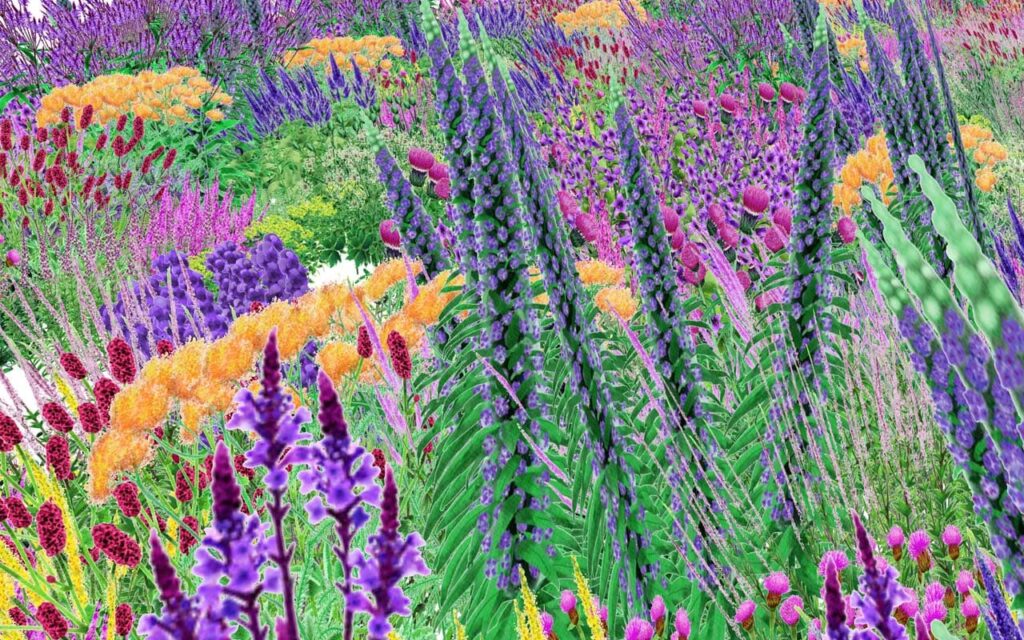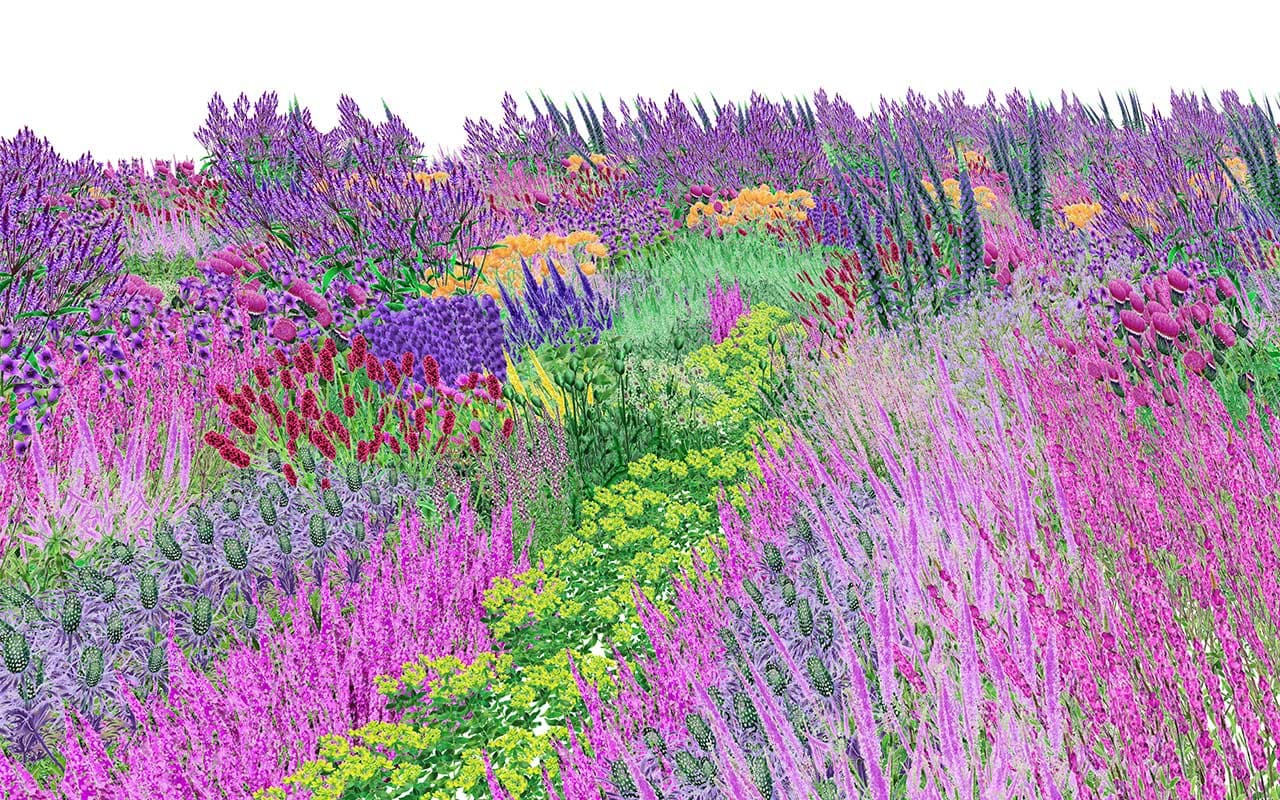Pollinator Pathmaker –a new permanent 55-metre-long living artwork by Alexandra Daisy Ginsberg that explores the vital role of pollinators- will come into full bloom for the first time this May at the Eden Project, Cornwall. The seeds for this unique artwork were planted in Autumn, and now the work has sprouted and blossomed over the winter months, ready for both the ‘human’ public and pollinating species – including bees, moths, beetles, and wasps – to engage with and enjoy. Dr Alexandra Daisy Ginsberg is an artist examining our fraught relationships with nature and technology. Through artworks, writing, and curatorial projects, Ginsberg’s work explores subjects as diverse as artificial intelligence, synthetic biology, conservation, and evolution, as she investigates the human impulse to “better” the world.
The unique artwork – made from 7000 plants, from 64 species – seeks to challenge what a garden is and who it is for. The ambition is that Pollinator Pathmaker is a global campaign, as well as an artwork, to make art for pollinators, planted and cared for by humans. There has been a dramatic decline in pollinating insects in the last 40 years due to habitat loss, pesticides, invasive species, and climate change and the artwork is a call to take action against this. The loss of a single species of pollinator can mean the end of a plant species.
Further public Pollinator Pathmaker gardens will be planted this year in other locations globally – with the Serpentine in London this spring, an Edition Garden commissioner, and with LAS (Light Art Space) Berlin, who are the International Edition Founding Commissioner. Meanwhile, anyone in Northern Europe can now plant their own garden at home; in a window box, in a garden, with their community, school or friends. You too can be part of Pollinator Pathmaker by creating a garden plan at pollinator.art, supported by the Google Arts and Culture Lab.
The website uses a special algorithm where plants ‘empathetic’ to pollinating insects from bees to butterflies to moths and wasps are suggested in a unique design plan generated for each gardener’s plot size and garden conditions. Every garden planted – from backyard to windowsill to country field – is also then part of the living artwork designed and tended with empathy for pollinators, not humans.
The world-famous Biomes at the Eden Project are fronted by 11.5 hectares (28 acres) of striking contemporary Outdoor Gardens. The Pollinator Pathmaker installation sits nestled in the Wild Edge zone, which stretches around the perimeter slopes of the Gardens, visible from across the site. Pollinators see colours differently from us, forage in different ways, and emerge in different seasons to each other. As a result, a garden designed for them may look quite different from a garden designed for us and the site at Eden will be unveiled peppered in unusual colour combinations – unusual to the human eye, at least!
Now is the season and time to get planting your own Pollinator Pathmaker garden as the green fingered will know, in order for it to bloom this Spring.
Using the Pollinator Pathmaker website, anyone can use the artwork’s custom algorithm to generate their unique planting scheme, as a call to action to plant your own pollinator garden. The algorithm will create a design to support the most pollinator species possible from a curated selection of plants chosen for their benefits to a variety of pollinators. Users can see a 3D visualisation of their unique garden bloom on their screen, created from paintings of each plant by Ginsberg, who has carefully researched hundreds of species. The website has been developed by The Workers with visual identity by Studio Frith.

Pollinator Pathmaker has been developed in collaboration with Eden’s expert network of horticulturists, scientists and advisors. This includes the National Wildflower Centre which is based at the Eden Project, Eden’s master beekeeper Rodger Dewhurst and pollination experts including Professor David Goulson and Marc Carlton. Machine-learning expert and string theory physicist, Dr Przemek Witaszczyk of Jagiellonian University, Kraków, worked with Ginsberg to develop the algorithms behind the planting programme.
The Pollinator Pathmaker project is part of “Create a Buzz”, a three-year programme for the Eden Project funded by the Garfield Weston Foundation. “Create a Buzz” comprises the major art installation, Pollinator Pathmaker, by Ginsberg, a physical and digital pollination trail through Eden Cornwall’s Outdoor Gardens, new plantings of fields of wild flowers and a range of community and education projects. It seeks to communicate the story of the UK’s native pollinators: their vital role, their current plight and their restoration, using art and culture to do so.
If pollinators designed gardens, what would humans see?
Listen Desde la Tundra PODCAST (with subtitles in ENGLISH)
